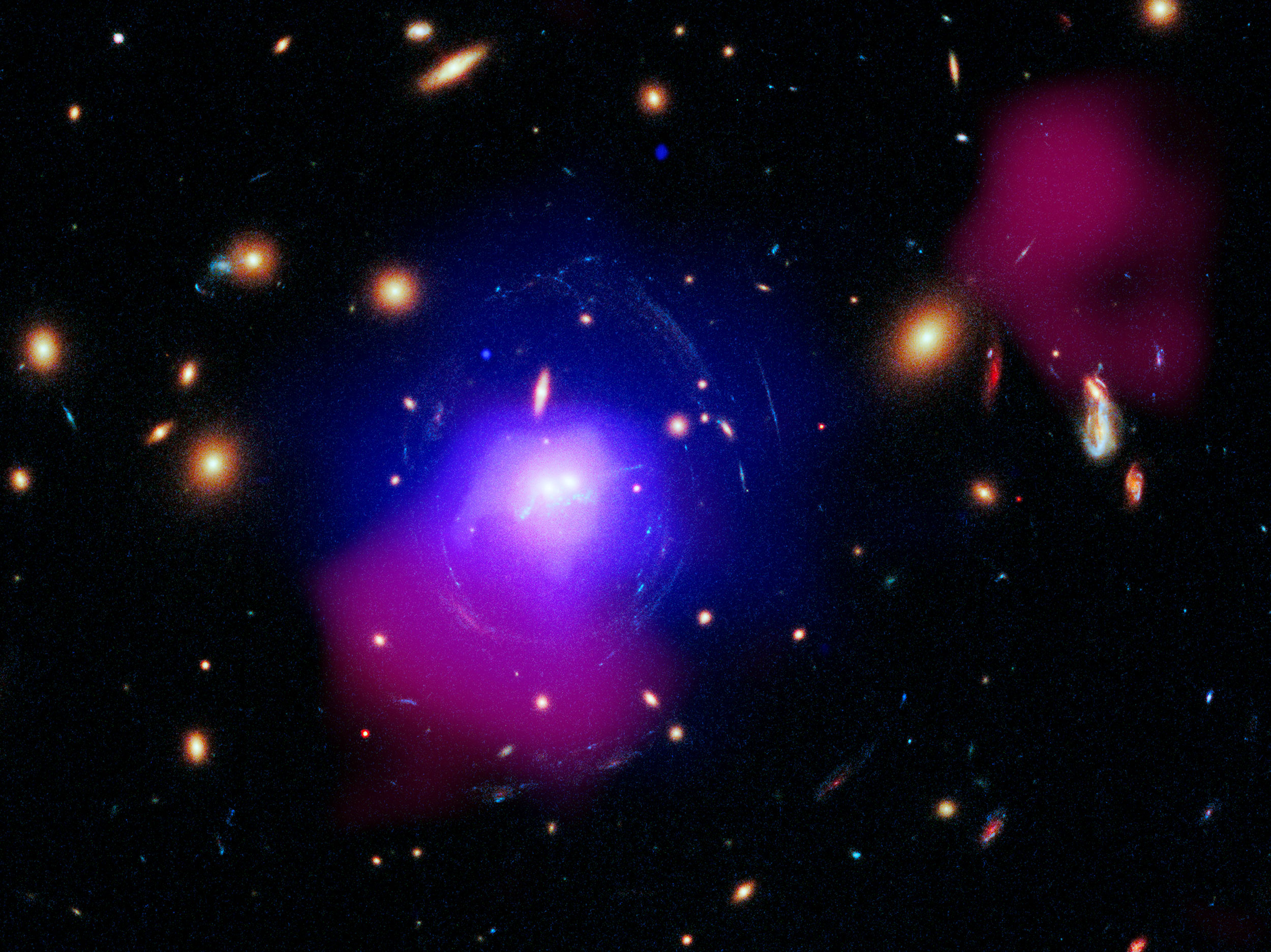Image List
-

Astronomers have found evidence that an enormous explosion billions of years ago may explain the formation of a striking pattern of star clusters around two massive galaxies — resembling “beads on a string” — in a galaxy cluster. This image shows SDSS J1531 in X-rays from Chandra (blue and purple), radio data from LOFAR (dark pink) and optical data from Hubble (appearing as yellow and white). The Chandra data reveal wing shaped X-ray emission that traces dense gas near the center of SDSS J1531. These wings are the edge of a cavity created by a jet from a supermassive black hole pushing gas aside. LOFAR shows radio waves from the remains of the jet’s energetic particles filling in the giant cavity. Together, these data provide compelling signs of an ancient, massive explosion.
Credit: X-ray: NASA/CXC/SAO/O. Omoruyi et al.; Optical: NASA/ESA/STScI/G. Tremblay et al.; Radio: ASTRON/LOFAR; Image Processing: NASA/CXC/SAO/N. Wolk -

A labeled image showing the main features in the galaxy cluster SDSS J1531. X-rays from Chandra are blue and purple, radio data from LOFAR are dark pink and optical data from Hubble appears as yellow and white. The Chandra data reveal wing shaped X-ray emission that traces dense gas near the center of SDSS J1531. These wings are the edge of a cavity created by a jet from a supermassive black hole pushing gas aside. LOFAR shows radio waves from the remains of the jet’s energetic particles filling in the giant cavity, along with radio waves from a possible counterjet in the upper right. The inset gives a close-in view of the center of SDSS J1531 in optical light, showing two large galaxies and a set of 19 large clusters of stars, called superclusters, stretching across the middle. The image shows these star clusters are arranged in an ‘S’ formation that resembles beads on a string. Gravitional lensing is also shown, caused by mass in SDSS 1531 distorting the light from background galaxies.
Credit: X-ray: NASA/CXC/SAO/O. Omoruyi et al.; Optical: NASA/ESA/STScI/G. Tremblay et al.; Radio: ASTRON/LOFAR; Image Processing: NASA/CXC/SAO/N. Wolk